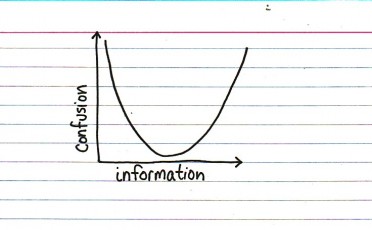Research and Evidence
/From early on in my doctoral studies, I gravitated toward research that had practical implications. I am not suggesting that survey research is not practical, but for the most part it really didn't interest me that much. I was far more interested in studies that measured things that matter to teachers and students: time on task, engagement with the instruction, student artifacts and learning. As a teacher, these were the things that interested me. I had to be sensitive to each student as an individual and the different factors that directly influenced their lives, but I felt more compelled to make my classroom as exciting as possible than I did to try to change their lives at home or their attitudes toward school. This is just where I chose to put my time and energy. So, when I see research that is really creative, unique or practical, I am suddenly interested. There are two such studies that I find fascinating. The first is a study about the influence of success or failure on perception. This could have easily been done with a research instrument (survey, questionnaire, etc.), but these researchers chose to measure the influence of success or failure (in this case, kicking field goals) by having participants adjust a miniature goal post to the size they thought was to scale after they had just attempted 10 field goals. People who kicked too low routinely adjusted the mini goal post too high; people who kicked wide right or left would judge the distance between the goal posts to be more narrow than they really are. Even more surprising, the more field goals a person made, the wider they adjusted the goal posts. It's fascinating to think that people standing side-by-side, based on their success at kicking field goals, were actually not looking at the same object. I really like this study because it accurately reflects how people might actually perceive objects or experiences with which they have had past success or failure. I used to notice something similar with my students in regard to reading ability. Those who struggled with reading were more likely to perceive words with a lot of letters as harder. I found them skipping past or mumbling long words, even if the words weren't really that hard to read (e.g., doorstop). I have no formal data, just my own experience, to back this up, but based on the findings of the field goal study it makes sense that this phenomenon would apply to other areas of life.
The second study, if one can call it that, is based on a series of VW commercials. The premise is that people will be more likely to do otherwise mundane or bothersome activities if they are made to be fun. You need to watch the videos to see what I am talking about. What I find interesting is the way they measure the influence of "fun" on the desired behavior: the number of people using a recycling bin, number of people using the stairs and the weight of the trash in a garbage can. Each of these outcomes measure exactly what the fun was meant to increase. No surveys or other validated instruments; just an increase in the thing that is meant to be increased.
Of course, student outcomes aren't as tidy as the number of people to use the stairs instead of the escalator in a 24-hour period. Concepts such as "understanding," "effort," and "engagement" are really hard to define, thus, are hard to measure. But there are some things that teachers would like see more of from their students that can be measured: time on task, attention to detail, and higher-order thinking. These two studies have breathed a little life into my interest in student outcomes and classroom-based research. They are innovative, creative and, at least to the people who are interested in perception or increasing civic-minded behavior, relevant. Research should be, if nothing else, relevant.
I can still hear the words of two of my professors ...
Professor A: By the time you leave my class, I want you all to be from Missouri. Why Missouri? Because it's the Show-Me State, and if you make claims based on your research, you need to show me. Your data should show me something.
Professor B: If something exists, then it exists in some amount and can, therefore, be measured.
I didn't realize this at the time, but these have become words to live by.






